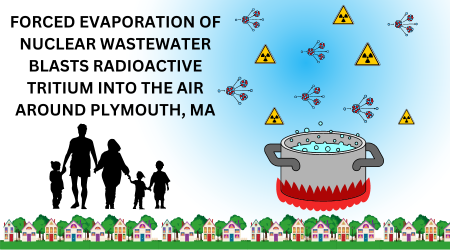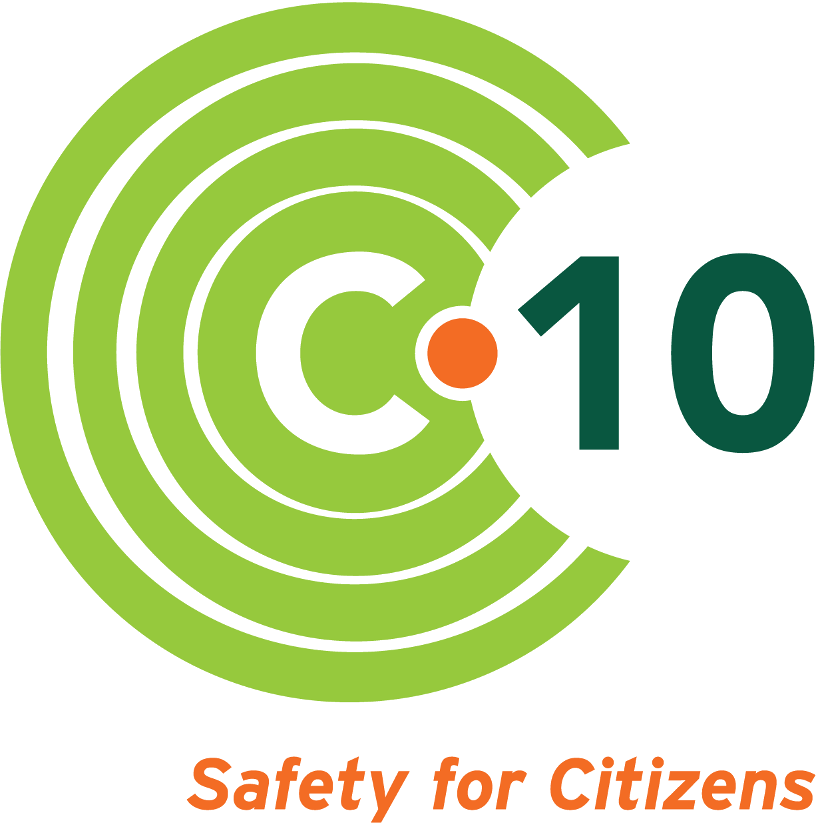Blog Post
New Fact Sheet: Seabrook Evacuation Plans
- By C-10 Administrator
- •
- 19 Dec, 2017
Living Near Seabrook: What You Need to Know
The people who live and work in the communities surrounding Seabrook Station nuclear power plant carry a special responsibility to understand that the risk of an accident — however small — is real. It’s wise to be pro-active and learn what you would do, and where you would go, in the event of a significant radiological release. The following is information compiled from state and federal agencies.

Evacuation Plans
What is an Evacuation Plan?
What is often called the “evacuation plan” is actually the “emergency plan,” and it includes planning for a range of emergencies and/or disasters at a nuclear plant. Not all emergencies would result in an evacuation order; citizens may instead be directed to “shelter in place.”
Why does Seabrook Station need an emergency plan?
At Seabrook Station, as with all commercial nuclear power generating facilities, an emergency could result in a radioactive release affecting public health and safety. Plant operators, as well as federal, state and local officials, are required to have emergency plans in place. These agencies communicate regularly and conduct joint preparedness drills.
Who develops the Evacuation Plan?
The plans for offsite emergency response are developed by state and local officials, and are reviewed by the Federal Emergency Management Agency (FEMA). The New Hampshire Division of Homeland Security and Emergency Management (HSEM) maintain the state’s nuclear power plant off-site emergency plans, including annual reviews and updates. Plans and procedures for Massachusetts are reviewed annually by the Mass. Emergency Management Agency (MEMA) and revised as necessary.
Under the oversight of the U.S. Nuclear Regulatory Commission (NRC) and FEMA, the emergency plans are reviewed, drilled and evaluated regularly to ensure they meet regulatory standards.
What area is covered by the Evacuation Plan?
There are two Emergency Planning Zones (EPZs) around a commercial nuclear power plant:
- Plume Exposure Emergency Pathway Zone (EPZ): A 10-mile radius surrounding the nuclear plant where people may be harmed by radiation exposure. This is the “evacuation zone” around nuclear plants required by NRC regulations.
- Ingestion Exposure Pathway EPZ: a geographical area extending 50-miles beyond a nuclear power plant, where radioactive materials could contaminate water, food and livestock. Evacuation plans are not established for this zone.
Cities & Towns in Seabrook’s EPZ : Seventeen New Hampshire communities fall within Seabrook’s 10-mile emergency planning zone: Brentwood, East Kingston, Exeter, Greenland, Hampton, Hampton Falls, Kensington, Kingston, New Castle, Newfields, Newton, North Hampton, Portsmouth, Rye, Seabrook, South Hampton and Stratham. In Massachusetts, this zone includes: Amesbury, Merrimac, Newbury, Newburyport, Salisbury and West Newbury. About 170,000 people live in these communities.
How can I find out what the plan is for my location?
Residents within the EPZ is area are given emergency information about radiation, evacuation routes, special arrangements for handicapped, via the Emergency Public Information Calendar supplied by each state. If you live, work, or vacation within the 10-mile EPZ, you should be prepared for an emergency at Seabrook and be familiar with the EPZ’s emergency plans and procedures; that is, whether the directive is to “shelter in place” or evacuate. If you need a copy of the calendar, you can usually get one at a local police or fire station, or get them online from Mass. MEMA or N.H. HSEM.

How will I be notified of an emergency or accident at the Seabrook plant?
Outdoor emergency sirens will make a steady three to five minute sound. If you hear a siren, go inside your home or a nearby building. The sirens will also be able to broadcast special emergency messages to alert people at the New Hampshire. beaches.
Tune a radio to an Emergency Alert System (EAS) station . These stations will broadcast an emergency message that will provide you with any actions you should take to protect yourself and your family. Staying tuned to the radio might be all you’ll need to do, or you may be told to take different actions if emergency conditions change. Tune in to: 97.5 FM
(WOKQ) 106.1 FM
(W291CC) or 1450 AM
(WNBP). Boaters in the area will be alerted by the U.S. Coast Guard. Channels 16 and 22 on marine radio will also give boaters information. Local emergency management officials — sometimes the town’s fire chief — are the primary contact in case of a nuclear emergency.
For more information, find links
here.
You can also visit the N.H. HSEM’s Nuclear Power Plant page
, or Mass. MEMA’s page on Seabrook Nuclear Power Station.
On these websites, you can learn about event classifications, evacuation routes, information for farmers, tips for planning & supplies to have, and where to get potassium iodide tablets to protect your thyroid in the event of a radiological accident at Seabrook.
To download a PDF version of this fact sheet, click here.
C-10 Research & Education Foundation, Inc.
11 Chestnut Street
Amesbury, MA 01913
Phone: (978) 465-6646
Email: info@c-10.org



